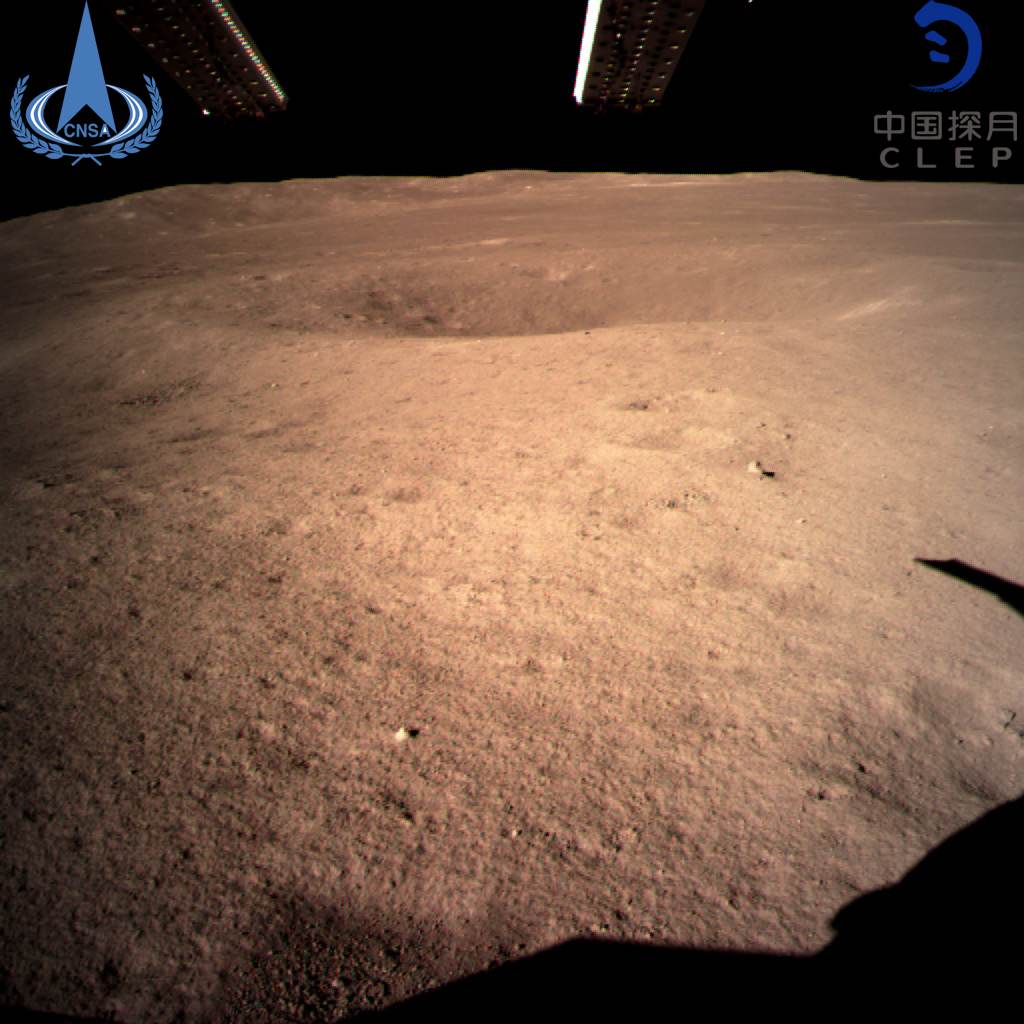
The south side of the landing site on the far side of the Moon /CNSA Photo
The Chinese moon landing on the far – or “dark” – side of the moon by the Chang’e-4 probe was the first in human history. It was made in Von Karman Crater, within the massive Aitken Basin. The crater is named for Theodore Von Karman, a Hungarian-American founder of the United States’ Jet Propulsion Laboratory – and who was the doctoral advisor to the founder of the Chinese space agency. The Chang’e-4 probe also features four international payloads from German, Swedish Dutch, and Saudi Arabian scientists.
So while the Chinese state media positioned the landing as their state “racing to the front” of international exploration – don’t call it a “space race,” one Rutgers University expert said in a Thursday interview.
“Even this Chinese mission is also an international mission, in a way,” said Sonia Tikoo, a lunar expert who is an assistant professor in the Rutgers Department of Earth and Planetary Science.
The Chang-e-4 probe is aimed at exploring Van Karman and perhaps the surrounding Aitken Basin, which was so blasted apart by a meteor in the ancient past that it may have left expose the moon’s mantle – and thus some of its heretofore unknown interior, said Tikoo, who has published on the moon’s magnetic properties creating the eye-catching “lunar swirls” on some of its surface.
“If the rover drives to the right places, and finds the right kinds of materials, we could learn about the composition of the mantle – and the moon’s interior,” she said.
The Chinese had to send a relay satellite launched in May so that the rover mired on the far side of the moon – always facing away from Earth – could send back data to scientists on our planet.
Tikoo said the tools, including a spectrometer and a dosimeter – is likely to yield much the same information as previous missions by the U.S. and U.S.S.R. decades ago.
Since the Soviet Union last landed on the moon in 1976, it’s only been two Chinese landings – one in 2013, and this latest touchdown. The United States has increasingly focused on the habitability of space in places like Mars and the moons of Jupiter and Saturn, the Rutgers scientist said. The data the Chinese could send back
But the perception that the Chinese are competing could indeed add further funding and incentives to American exploration out in space, Tikoo said.
“Nationalism has been a tool that’s been used by space programs around the world, to generate interest from the public – and in turn, fund it,” she added. “If that’s a motivator to make this cool science and engineering happen, that’s fine… Space is ultimately for everyone.”




